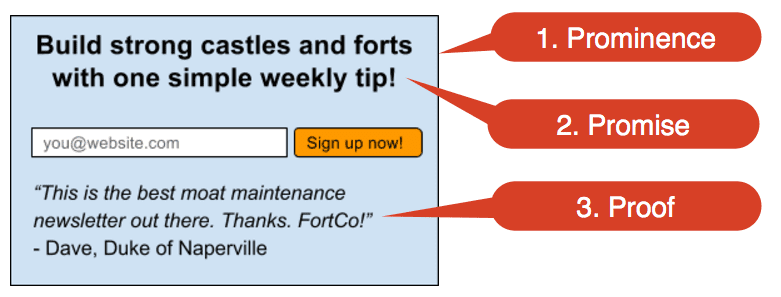As simple as WordPress has made the concept of blogging and going live with a site of your own, there is still a great demand for high-quality looking sites. Even with thousands of WordPress themes being readily available, some bloggers and brands simply need to have a custom design that lets their sites stand out from the crowd.
This is something Andy knows all too well, as his blogging efforts and design company are focused on making brands look great online through site design. This is exactly why he’s being featured in this latest edition of Meet the Bloggers. Be sure to read through all of his actionable tips and advice below, as he’s become quite the expert at site design and online marketing today.
1.) Please tell us about yourself and how you got into blogging?

We build websites and a new website isn’t something you need everyday. And deciding who to work with is a big decision. But we have dozens of people here so I need a steady stream of leads and new projects. That’s the challenge and the context.
So I needed a way to keep in touch with a lot of people during that long buying interval and long sales cycle. I needed a way to show expertise from a distance and over time. I needed a blog and an email.
Content solved that problem. It helps us stay top of mind with the hundreds of people we’ve met over the years without drinking coffee and beer with each of them individually.
That was 10 years ago. Since then we’ve learned how to create keyphrase-focused content, how to combine search and social, how to pitch to editors and how live events are an even more powerful source of trust. But it all started with a blog post and an email ten years ago…
2.) What is the focus of your blog and why did you choose that niche?
People think it’s strange that we don’t blog more about web design. If our only service is building websites, why do we blog so much about content marketing, SEO and Analytics?
The answer is simple: it’s not about us.
We blog about marketing, not web design, because it’s what our audience is interested in. It’s the information they need most. If we only write about web design, probably, our subscribers and readers would be web designers. But our goal is to be relevant with marketing managers, marketing directors and CMOs. So we write how-to articles on the topics they need most: strategy, content, driving traffic and measuring ROI.
3.) How are you currently monetizing your blog traffic?
It’s all about lead generation. 95% of our revenue comes from services. But marketing does actually generate some revenue.
- Event registration: We have monthly and quarterly events and an annual conference called Content Jam. Together they generate around $100k in revenue per year.
- Book sales: The book, Content Chemistry, sells around a thousand copies per year, generating around $20k in revenue.

4.) What do you know now that you wish you knew when you first started blogging?
Had I known more earlier, I would have produced more long-form, detailed articles on more topics. There’s a chance that I would have earned durable rankings and visibility for some popular phrases. I also would have produced more original research earlier.
The companies that wrote the best how-to posts years ago have won a ton of traffic for some valuable phrases. The companies that produced lots of original research years ago won a lot of subscribers and authority.
But I don’t have many regrets. Things have worked out pretty well!
5.) What are three blogs that you visit almost daily?
I don’t visit each of these daily, but I really like these blogs:
These blogs go deeper into specific tactics with examples. Virtually every post on these sites has strong value.
6.) Can you give us three recommended tools/services that you use with your blogging?
It’s crowded out there, which makes things hard. But there’s an update. all that competition makes research easy. I recommending spending time with the competitive analysis tools to find what’s working for everyone else.
Here are the three main types of analysis I recommend:
- Top social shares
- Top ranking articles
- Overall traffic and authority
Use these insights to inform your content strategy. When you know the landscape, you’ll make better decisions about what to write about, what phrases to target and where to publish. Keep in mind that every “competitor” is also a potential collaborator. The most effective marketers reach out and work with other brands all the time!
7.) What advice would you have for someone who is just starting with their first blog?
First things first. You’ll get more value out of every visitor if you first optimize your site for conversions. Start with your email signup form. If you add the “Three P’s” to that little signup box, you can increase the percentage of visitors who subscribe, which is the key to list growth and long term traffic.
Here are those three P’s…
- Prominence: The signup form stands out visually because of it’s size or color. Because it’s a sticky element that’s visible no matter how far down the visitor scrolls, or because it’s a popup window.
- Promise: The form tells the visitor what they’ll get if they sign up. What’s the topic? And it tells them how often they’ll get it. Is it daily or monthly?
- Proof: The form indicates that other people like this newsletter. That can be quantitative (number of subscribers) or qualitative (a testimonial)
Here’s an example of a form with all three. This can have a huge impact on email list growth so do this first!
8.) What’s the best advice or tip you’ve discovered about blogging since getting started?
I’ve learned that medium quality content doesn’t work very well. Visitors want high-value, super useful step-by-step processes. They want detailed instructions with lots of examples. They want something great. After looking at the Analytics for hundreds of pieces of content, I’ve learned that the great stuff gets much better results than the good stuff.
But visitors also want content that’s easy to consume. It’s highly visual and easy to scan through. The like bullet lists, subhead and videos.
So I’m always trying to combine these two criteria. Usually that means writing long detailed articles, but with short paragraphs and multiple images.
9.) If you only had $100 to start a new blog, how would you use it?
First, I’d write a few valuable how-to articles for my industry. They would be long, comprehensive and keyword-focused. Since it’s a new blog, I would likely target a four or five word phrase. Start sharing on social and attracting a few email subscribers (see above) Cost: $0
Then I’d reach out to other blogs and write a few related posts that refer back to the pieces on my site. And working with the editors will make me a better writer. I’d get into a rhythm where two thirds of my content is on other sites and one third is on my own. Cost: $0
Finally, now I have the pieces in place: some quality content on my site, a few subscribers / followers and relationships with a few editors. Time to do some original research. I’d think of a statistic that doesn’t exist yet, but would support a lot of the claims people make in my industry. There are probably lots of them. Then I hire a virtual assistant to gather the data for the research so I can do the analysis. Cost: $100
At this point I should be positioned to truly contribute to my field. By repeating this process over several years, I’d position myself as a thought leader with a strong personal brand. That should make everything a little easier. 🙂
10.) How can readers of the blog get in touch with you?
You can find my most useful articles here. You are also welcome to connect with me on LinkedIn!
Thanks again Andy for taking the time to share her advice and story with the Blogging Tips community. If you would like to learn about other bloggers and how they are finding success online, be sure to read through our blogger interview series.

